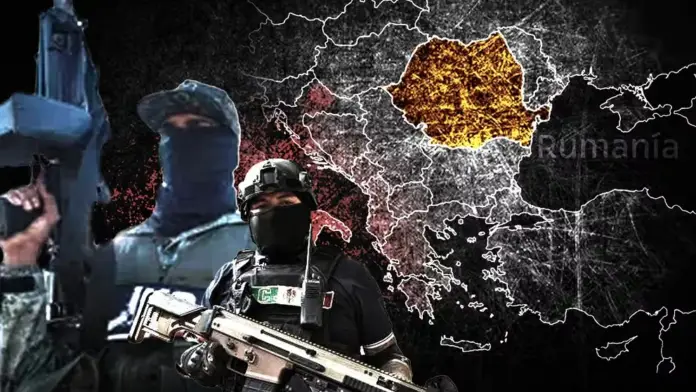In an interview with Infobae Mexico, Mike Vigil, former head of International Operations for the DEA, said that the Balkan country became a nation of consumption of all types of drugs and not just a transit for Mexican cartels
:quality(85)/cloudfront-us-east-1.images.arcpublishing.com/infobae/RQCH52CUGJALTLA4PMAUGDSO4M.jpg)
According to the Drug Enforcement Administration (DEA), the Sinaloa Cartel has a presence in more than 100 countries on different continents of the world, and Europe is where the Pacific organization has expanded its criminal operations.
The Balkan Peninsula, in southern Europe—made up of Albania, Bosnia and Herzegovina, Bulgaria, Croatia, Slovenia, Greece, North Macedonia, Montenegro, Romania and Serbia—has been the region that the Sinaloa Cartel chose to extend its domains dating back to 2015, according to data from Europol.
Romania was used by the Mexican organization as a transit country for drugs to other markets such as Ukraine, Russia and China, which was known as the “Balkan route.”
“It was a transit country for drugs, but now it is something worrying. The Romanian government is concerned about drug consumption; “There is marijuana, opioids, heroin, amphetamines being consumed and cocaine is coming in,” explained Mike Vigil, former head of International Operations for the DEA, in an interview with Infobae Mexico, who went to Romania to develop a national strategy to confront this problem.
Vigil commented that there is a link for several years between Romanian organized crime and the main Mexican criminal structures, especially with the Sinaloa Cartel and currently with the CJNG.
“There have been links between the cartels and organized crime in Romania for a long time, apart from the Sinaloa Cartel working with groups of Romanian organized crime to import tons of cocaine from Mexico to Europe, especially to England,” said the former DEA agent, highlighting that 70% of the drugs that arrive in Romania, for example from the Mexican cartels, are by sea.
According to the security intelligence of the Balkan country, Mike Vigil pointed out, these criminal links are becoming stronger and now “it seems that the Jalisco Nueva Generación Cartel is also getting involved, but the Sinaloa Cartel wants to replace the Colombian groups that were controlling the movement of cocaine.”
These connections between Romanian and Mexican mafias are not a new issue. In 2021, the Financial Intelligence Unit (UIF), then headed by Santiago Nieto Castillo, filed a complaint with the Attorney General’s Office (FGR) against the Romanian citizen and alleged businessman Florian Tudor, alias El Tiburón, who was accused of having an entire network of card cloning, money laundering and fraud in complicity with Mexican politicians and other businessmen.
In the book El Amo de Jalisco, journalist Ricardo Ravelo claims that the DEA was already following the steps of Tudor and his criminal network, which included the state leader of the Green Ecologist Party of Mexico (PVEM), José Peña Ruiz Chávez, who was expelled from the political organization shortly after.
The expansion of Mexican criminal groups in Romania had been reported since March 2020, after the arrest in that country of Carlos Rubén Ramírez Monroy, El Flaco, a high-ranking member of the CJNG based in Europe.
El Flaco, who had been trafficking for months before his arrest in Romania and other parts of Europe and New Zealand, was extradited to the United States and sentenced by Judge Grey Miller of the Southern District Court of Texas to 15 years and six months in prison after pleading guilty to trafficking methamphetamine from Mexico to Houston, from where it was distributed to other destinations. The North American authorities had been tracking El Flaco’s trafficking activities since 2017.
The former head of International Operations of the DEA assured that the Mexican cartels’ bet in Romania is the economic profits that represent double those obtained in the United States.
Source: infobae







